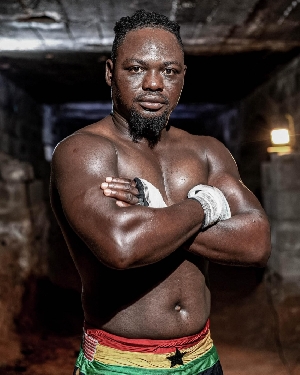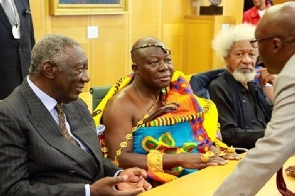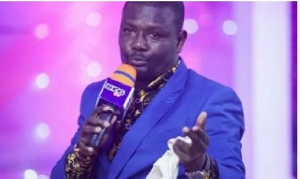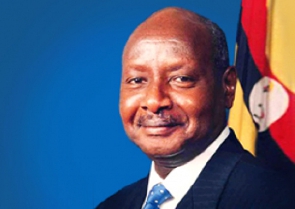- Home - News
- TWI News | TV
- Polls
- Year In Review
- News Archive
- Crime & Punishment
- Politics
- Regional
- Editorial
- Health
- Ghanaians Abroad
- Tabloid
- Africa
- Religion
- Election 2020
- Coronavirus
- News Videos | TV
- Photo Archives
- News Headlines
- Press Release
Opinions of Monday, 28 September 2015
Columnist: Prince Owusu Attah
A sustainable developmental plan for Ghana's Art industry
At the cross roads of Ghana's quest to formulate a 40year National Development Plan, we the future leaders of this national would like to add our unequivocal quota to plan for an unbiased representation and the share of the national cake. Decades after independence, Ghana’s art and craft has seen continuous being in the decline.
In the 1960's Ghana's first president Dr Kwame Nkrumah envisioned the country’s wealth generation through its art and craft. When ascended the presidency He then started by creating a tourism ministry to formulate policies on how it could project the country’s to the outside world.
Alongside, he commissioning of a subcommittee to propose better ways of promoting and sustaining the trade of our art and craft sector. Amongst the several suggestions was a brilliant idea of industrialising of the art sector.
It was envisioned to give the industry a more formidable outlook and also promote mass production to meet international standards. The government upon this advice started the Japong textile factory, Ghana Textile Company etc. for the textile industry.
Dr Nkrumah also institutionalised the one Ceramic factory for one region policy. The policy was structured to give most ceramic artist the opportunity to access very low interest loans to start their factories and other key benefits with regards to capital mobilisation. There was also the duty free importation of equipment and several other benefits with tools and equipment. The policy also saw the setting up of the College of Art at Kwame Nkrumah University of Science And Technology to train young and upcoming students in art. Most artist were also flown out for international trainings and studies to come and impart the knowledge they had acquired.
A lot was done to make art an integral part of the nation’s economic sector. Amongst these tremendous works by the then president and other things are the only realistic plan by governments most of us have come here as Visual artists.
After 50 years, there is none extant amongst them. From the era of the coup de tat to democracy most these factory suffered the hard retrogression and ill effect of political instability, short-sightedness of governments, economic downturns etc. The country’s leaderships over the years have killed art. Visual Artist in Ghana have being segregated! It starts from the homes, when children with interest in art are forced to pursue other course because of the notion “lack of future “for these children. Apathy towards the promotion of art has eaten its way into the schools and students in the visual art class are tagged “not brilliant” and unserious.
Some schools do not allow students in visual art to contest for leadership positions because they are classified not fit. Most schools and most agencies do not sponsor or give scholarship to visual art students or students who intend to study visual art. The segregation is deep and the neglect is high. A hand full of our countries leaders understand the relevance of visual art in national development.
Most of the heads of art agencies be it the visual, performing, liberal art are not artist. Amongst these are the reason why our country has lost and keep losing its grip of the creative industry.
We believe this National Development plan when properly formulated would salvage our country’s art and craft industry.
Primarily, the Art and craft sector lacks proper statistical data and information. Literally, you cannot receive assistance when your very existence is not known or recognised. The Ministry of tourism, culture and creative art and should collaborate with Statistical Service to tailor its data collection to the art and craft industry across the country. This would the government with relevant and reliable statistics to in its policy formulation and implementation processes which would stimulate the growth of the art and craft industry.
More also, the Ministry of Tourism, Culture and Creative Art (MOTCCA) should make a conspicuous allocation of funds to directly support small and large scale art and craft enterprises. In 2012, under the late president Mills administration, 2 Million Ghana Cedis was allocated to the creative art industry which was openly criticised by policy makers. This budget allocation, with its unclear segmentation included visual artist who also formed part of the creative art industry.
Sources from the ministry indicates that, only the music industry benefited from this fund, which is unhealthy in the fair growth for all sectors of the economy. Most of the rich policies in this country are developed for harangue manifestoes but end up at party headquarters.
We trust that this development plan would not spend years at legislative level when developed. The development plan should also establish sub avenues where these forms of funds can be accessed like commercial and rural banks across the country. It is important to note that, government would recoup quadruples of its investment in the art in several forms and avenues.
The policy can also include the creation of skill and business incubation and business skill development which would be an avenue to harness a pull of these artist and entrepreneurs. These structures would be effected through academic and professional institutions and also through a ministerial programme across the country. Also the introduction public / private investments incentives like the tax holidays, tax concession and reduction of VAT payments etc.
It is also important to note, that Ghana has reached point where the ingenuity of its artists must be protected. The protection of the intellectual property of these artists must be firmed up in this country. The development plan we believe, should focus on firming up and upgrading certain organisations like the Copy Right agency and the Registrar General Department.
There should be an act of parliament on intellectual property protection because of the continuous duplication of peoples’ ideas and creative works in this country. That is to say, a more formidable law is needed because the work of the copy right offices hasn’t being effective enough.
The development plan committee should revisit Dr Nkrumah long term projects of the 60’s. Instituting the long deserted projects like one ceramic factory, one region project and textile factory projects, would be off immense benefit to this nation. In an era where exportable products like the cocoa, gold, diamond and oil keeping loosing it value on the international stock market, it would be clever, to shift the national business focus onto the industrial arts.
This draws our attention to the need for value addition to our natural resources. This is another pertinent story for another day, but the key point to indicate here is, mass production of functional art pieces can be a new form industrialisation for the economy.
Ghana is rich with abundant resources like the cottons, clays, minerals etc. for it to industrialise them for income generation. This sector, when properly formulated and structured, would mitigate the nations rising rate of unemployment.
The 40year plan should address a need for multi-cultural and cross cutting networking of the art and craft. Projects and programmes that pull together artists and investors that is, continuous exhibitions across the country and across the globe should be promoted. MOTCCA which is in charge of the promoting of Ghana’s art and culture should practically involve most of these artist in its tours and also organise international exhibition for these artists to network themselves with other internationally.
Art collector and curators across the globe are fascinated by the intrinsic art works produced in Africa and this is an opportunity we as a nation could tap in. On the international market products sold for tens of thousands of dollars, are sold below the hundreds in Ghana. The country can definitely get its share when it place these works on an international stage.
There are several of linkages between the work of art and craft and other sectors of the economy. The institutionalisation of a policy that binds all state institution on the use of locally produced craft works in it operational processes would logically be a form of internal income generation. This form of networking promotes the ‘patronise made in Ghana goods’ agenda. Also a major focus which needs immense attention the promotion of Sculptural Architecture. This topic would highlighted in our subsequent call on the government.
Just as the government has conventionalised Friday African wear and the Fugu which we have appreciated over the years, we hope government would institutionalise the African branding in the built and urban planning projects. This would be pursued by embarking sculptural projects in all state institutions.
A project that would put a microscopic glance on Ghana’s Architectural systems like the Brits, Americans, Dutch etc. whose statues and architectural strides have gained prominence across the globe, drawing tourists from all walks of life.
Ghana is at the cross roads of forming an unbiased, not politicised, fairly represented National development plan and as artists we believe our voices is highly needed.
The development plan which is going to be a blueprint for Ghana’s development for the next 40years should be well formulated to benefit all members of this country. We recognise the committee’s effort to broaden its scope of consultation and we believe the team would take into consideration if not all, most of the points we have raise. May God bless our homeland Ghana! Long live art. Long live our motherland.
Prince Owusu Attah
Lead Founder
National Alliance of Visual Artists, Ghana (NAVAG)
navagh.wordpress.com











